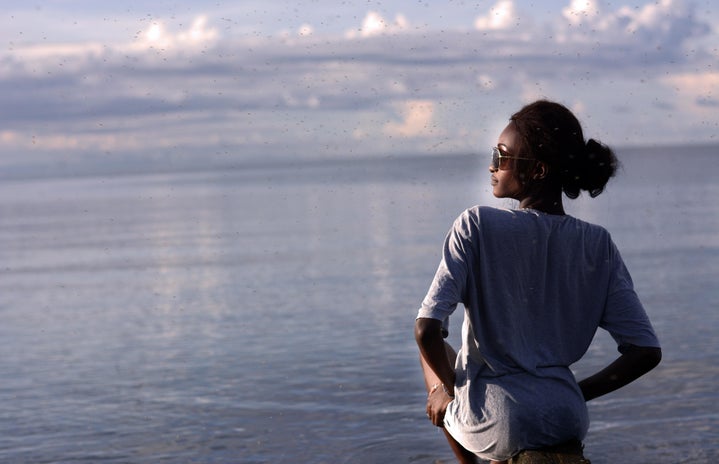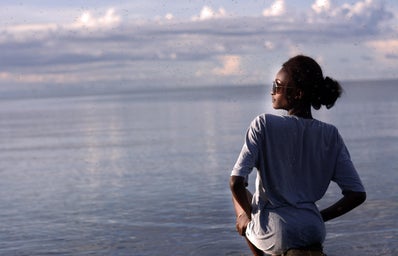Numerous studies have shown that media representation, or lack of it, can leave a lasting impact on individuals and society. HerCampus spoke to several University of South Carolina students who identify as LGBT+ about how they feel representation has affected them personally and affected the larger gay community.
Disclaimer: Names have been changed to protect identities. Some responses have been minimally edited for clarity or length.
“I was probably in the 7th grade [when I realized I was LGBT+],” explains Peter, 18, who identifies as gay/queer. “I had an epiphany moment and said ‘I’m gay’ while looking in the mirror. At first I laughed and then I began to cry. I soon began to hate that part of myself and repress it into the darkest corner of my mind. I definitely feel like the lack of LGBT+ characters made me more uncomfortable with the idea of being gay. I needed to know it was okay.”
Peter can’t recall the first time he saw a LGBT+ character in books, television or film, but many others can and describe that first experience as having a significant impact upon them.
“I was ridiculously excited,” says Rae, 18, bisexual on seeing positive representation of the gay community through Tara and Willow from Buffy the Vampire Slayer. The characters shared their first kiss in the 2001 episode ‘The Body’ and have been praised as one of the first accurate portrayals of a LGBT+ relationship on television. “I felt legitimized.”
Otter, 18, pansexual can’t remember who the first LGBT+ character they encountered was, but that the experience of seeing positive LGBT+ representation made them unbelievably happy.
“I think I might have cried. I didn’t have a word for what I was. I wasn’t straight or gay, so I thought that I was just broken. Until I saw a television show that had someone like me on it, I wasn’t confident enough to put a label on myself.
Sally, 18, realized she was bisexual while in high school.
“I never had crushes on girls because I just assumed ‘oh, we’re just friends!’ or ‘she’s very pretty, but not in a way that makes me jealous’. And then my sister came out as a lesbian, and I think it started to click for me that women, get this, can date OTHER WOMEN. And once I figured out it was a possibility, it just seemed like ‘oh, of course, cool, I’m gonna do that now.’”
Sally still struggled with her sexuality as she was left intimidated by media representation that overly-sexualized women loving women and portrayed them in a negative light. Women loving women, or wlw, is a blanket term used to refer to the shared experiences of lesbian, bisexual and pansexual women.
“My first experience with lesbians on television …wasn’t positive. I remember hearing lots of jokes about lesbians in stand-up and on shows like Family Guy or it being used to make fun of a girl.”
“I only ‘sort of’ liked girls, so it seemed like a huge leap to be taking when I hadn’t even dated a guy yet. Anytime my family hinted at lesbians, there was always the added wink, like a dirty secret about what these women did together. I never wanted anyone to be so prying about my sex life, especially during a time I didn’t want to have sex with anyone!
Several recent books, television, and films have received praise for their portrayal of LGBT+ characters. Aristotle and Dante Discover the Secrets of the Universe, the coming-of-age novel by Benjamin Alire Saenz, has been applauded for its portrayal of LGBT+ Mexican-Americans. Starz’s Black Sails and Netflix’s Sense8 are notable for their diverse casts and the Black Mirror episode ‘San Junipero’ was critically aclaimed for it’s portrayal of a wlw relationship. Moonlight (2016) won Best Picture at the Oscars after the now infamous mix-up at the 89th Academy Awards. HerCampus spoke with our subjects about recent positive representation of LGBT+ characters.
“[The first time I felt represented was] When I read Simon vs. The Homo Sapiens Agenda. Simon, the main character, isn’t distilled down to his sexuality. He is portrayed as an actual human who just so happens to be gay,” says Otter.
Simon vs. The Homo Sapiens Agenda is a 2015 young adult novel that follows high schooler Simon as he explores his sexuality and coming out. Abbie,19, bisexual also spoke about the positive influence of the novel’s 2018 film adaptation, Love, Simon.
“Love, Simon is one that I think all LGBT+ people can relate to. Even if you know your family is okay with [LGBT+], you still don’t know how they’ll react [to you coming out]. It establishes the intense pain and fear that can come with being outed and the double standard that’s seen where we feel the need to hide who we are, unlike straight people.”
Steven Universe, an animated show created by Rebecca Sugar in 2013, has been praised for its maturity in addressing sexuality.
“Shows like Steven Universe have done such an excellent job of normalizing LGBT+ characters while also establishing adult topics in a way that’s relatable for children,” says Abbie. “So often, adults consider the discussion of sexuality to be inappropriate for children, despite the fact that these discussions may not even be of a sexual nature, but may have the same innocence as say a princess marrying a prince in a Disney movie.”
Fox’s Brooklyn Nine-Nine, already praised for a racially diverse cast, made headlines within the past year for revealing one of its main characters as bisexual.
“Rosa Diaz from Brooklyn Nine-Nine really made me feel seen as a bisexual woman.” says Sally. “With most characters, it seems like they change their mind about who they like or it’s never explicitly stated that this character is bi. You have to really look between the lines. But Rosa Diaz SAID IT. She was worried, like I am when I tell people even now, but she was so brave and real and relatable
Even with such recent examples of groundbreaking representation, statistics show that LGBT+ characters are still the exception rather than the norm. Studies by GLAAD in 2017 and 2018 found that only 12.8 percent of movies released by major studios in 2017 included characters that were LGBT+, a significant decline from the past year. It’s even worse with television, where only 6.4 percent of regularly appearing characters on broadcast scripted primetime programming identified as LGBT+.
“We need more exposure! Make it feel ‘okay’ and normal,” says Peter, who sees increased representation as a means of opening a dialogue.
Rae also urges for more representation, particularly for underrepresented elements of the community such as bisexuality, asexuality, and transgender persons. When asked about her personal experiences with media portrayals, she explains “I’m still struggling. There’s not a lot of bi representation.”
Sally spoke of the need for more diversity in LGBT+ stories, particularly noting the large number of films that end unhappily for the main characters or focus solely upon the coming-out stage of their life. “I think it’s important to see the stories of LGBT+ finding their way and coming out, but I really want to see more stories where these characters just start to live their lives. No sad endings or huge come-out stories. Regular old movies, books, shows where the idea of coming out is just the stepping stone for a beautiful, long life!!”
“The LGBTQ community is full of love and life and happiness; it’s about time the stories we see start reflecting that and more.”


